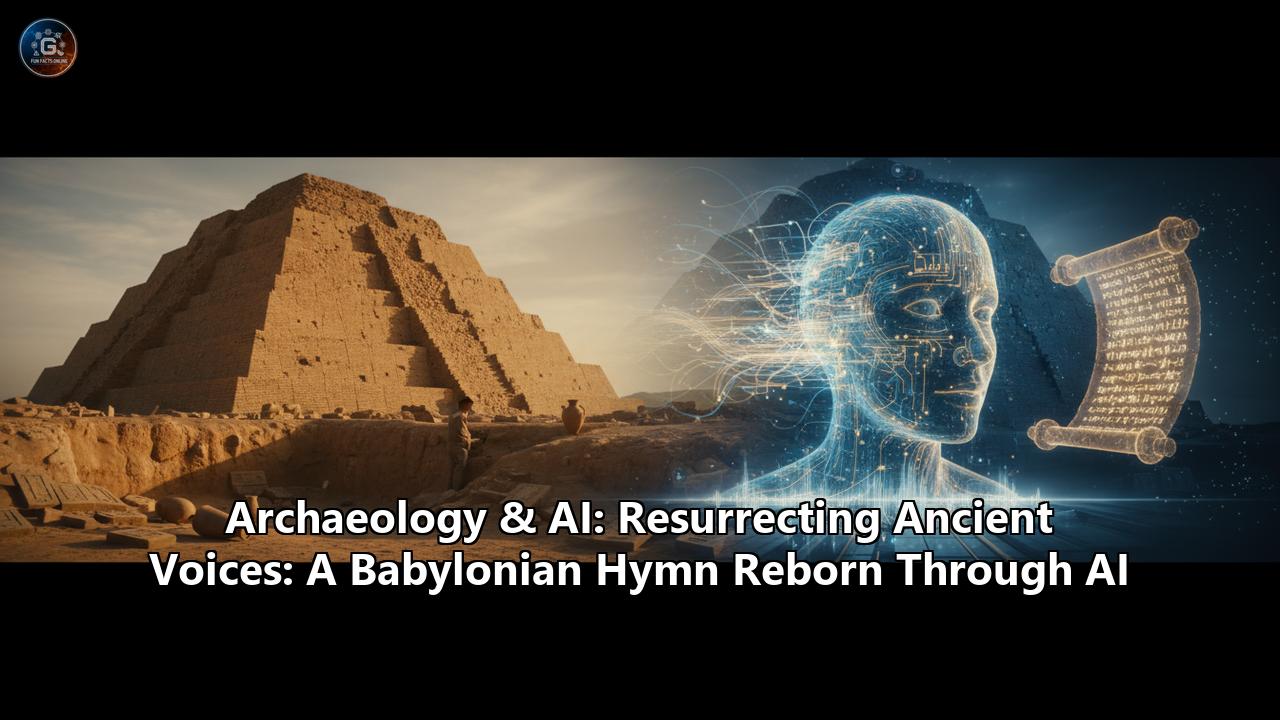In the heart of ancient Mesopotamia, where civilization first blossomed between the fertile banks of the Tigris and Euphrates rivers, a chorus of praise for the magnificent city of Babylon fell silent for millennia. Composed around 1000 BCE, a 250-line hymn celebrating the city's grandeur, its vibrant society, and its patron deity Marduk, was lost to the sands of time, shattered into fragments and scattered across the globe. Today, in a groundbreaking convergence of ancient history and modern technology, this long-lost voice has been resurrected, its verses painstakingly pieced together not just by human hands, but by the powerful capabilities of artificial intelligence.
This remarkable achievement is the result of a collaborative effort between researchers at the University of Baghdad and Ludwig Maximilian University (LMU) in Munich. For years, the study of ancient cuneiform texts—the wedge-shaped script used in Mesopotamia—has been a slow, arduous process. Hundreds of thousands of clay tablets, holding the secrets of the world's first cities, politics, and beliefs, lie in museums and universities worldwide. Yet, with only a few hundred experts globally capable of deciphering these complex characters, the vast majority of these documents have remained untranslated and inaccessible.
The challenge is compounded by the fact that many of these texts are incomplete, existing only as fragments that must be painstakingly matched—a task that has been likened to solving a gigantic jigsaw puzzle. Traditionally, this process has relied on the keen memory and often sheer luck of dedicated Assyriologists. A researcher might spend decades trying to connect a single fragment to a larger work.
Enter the "Fragmentarium," an AI-powered platform developed by a team at LMU's Institute for Assyriology, led by Professor Enrique Jiménez. This innovative tool is part of a larger initiative, the Electronic Babylonian Library, which aims to digitize every surviving cuneiform tablet. Since 2018, the project has been processing thousands of text fragments, creating a massive database for the AI to analyze. The Fragmentarium's algorithm sifts through this vast collection of digitized fragments, cross-referencing them to identify matching passages with a speed and accuracy that was previously unimaginable.
It was this revolutionary technology that breathed new life into the lost hymn to Babylon. The AI successfully identified and pieced together over 30 fragmented clay tablets, a process that Professor Jiménez estimates would have taken decades using traditional methods. These fragments, some of which had been stored in the Sippar Library in Iraq, spanned from the 7th to the 1st century BCE, demonstrating the hymn's enduring popularity over centuries.
The resurrected hymn offers a rare and poetic glimpse into the heart of Babylonian society. For at least 500 years, Babylonian schoolchildren were tasked with memorizing this ode, which celebrates not only the city's monumental architecture but also its lush natural environment. The text vividly describes the Euphrates River bringing the bounty of spring, turning the fields green and causing the corn to pile up in heaps. Such detailed descriptions of natural phenomena are a rarity in surviving Mesopotamian literature, making this discovery all the more spectacular.
Beyond its praise for the city's physical beauty, the hymn reveals much about Babylonian values. It speaks of kindness to foreigners, the release of prisoners, and the sanctity of orphans. The text also provides a surprising look into the role of women, mentioning celibate priestesses who served as midwives, a detail that offers a fresh perspective on their societal contributions. The hymn was sung to the chief deity Marduk, hailed as the "architect of the universe" who protected the weak and vulnerable.
The successful reconstruction of the hymn to Babylon is a testament to the transformative potential of AI in the field of archaeology. It is not about replacing human scholarship, but augmenting it, providing researchers with powerful tools to accelerate the process of discovery. As Professor Jiménez notes, the AI can quickly analyze all known variants of a Babylonian text, allowing for a more rapid and comprehensive reconstruction.
This project is part of a broader trend of "digital archaeology" where technology is unlocking the secrets of the past. Similar AI-driven projects are translating thousands of other cuneiform tablets, deciphering burned scrolls from Herculaneum, and restoring damaged Latin inscriptions from the Roman Empire. These endeavors are not just translating words; they are reassembling lost narratives, providing a clearer, more nuanced understanding of ancient cultures.
The rebirth of the Babylonian hymn is a powerful symbol of this new era of discovery. Thanks to the tireless work of researchers and the innovative application of AI, a voice once silenced by the passage of time can now be heard again, singing the praises of a city that was once the center of the world. This rediscovered classic of ancient Babylonia now stands alongside literary giants like the Epic of Gilgamesh, offering us a more complete and vibrant picture of life in ancient Mesopotamia. As technology continues to advance, we can only imagine what other ancient voices are waiting to be resurrected from the dust.
Reference:
- https://news.artnet.com/art-world/babylonian-hymn-resurfaces-ai-2664269
- https://indianexpress.com/article/technology/science/1000-year-old-babylonian-hymn-celebrating-ancient-city-revived-using-ai-10104340/
- https://www.sciencedaily.com/releases/2025/11/251111010011.htm
- https://www.timesofisrael.com/groundbreaking-ai-project-translates-5000-year-old-cuneiform-at-push-of-a-button/
- https://bigthink.com/the-future/ai-translates-cuneiform/
- https://www.iflscience.com/ai-deciphers-ancient-babylonian-texts-and-finds-beautiful-lost-hymn-67428
- https://archaeologymag.com/2025/07/ai-tool-helps-scholars-decode-roman-inscriptions/
- https://news.artnet.com/art-world/ai-cuneiform-translation-epic-of-gilgamesh-2523735
- https://arkeonews.net/new-ai-tool-fragmentarium-brings-ancient-babylonian-texts-together/
- https://colombiaone.com/2025/07/02/ancient-hymn-to-babylon-ai/
- https://www.jpost.com/archaeology/article-730612
- https://dig.watch/updates/ai-brings-babylons-lost-hymn-back-to-life
- https://archaeology.org/news/2023/05/17/230518-artificial-intelligence-cuneiform/
- https://penntoday.upenn.edu/spotlights/ancient-mesopotamia-goes-digital
- https://www.youtube.com/watch?v=pcsB6giz8Bc
- https://www.ancient-origins.net/news-history-archaeology/ai-latin-texts-0022295
- https://www.jpost.com/archaeology/archaeology-around-the-world/article-835867

